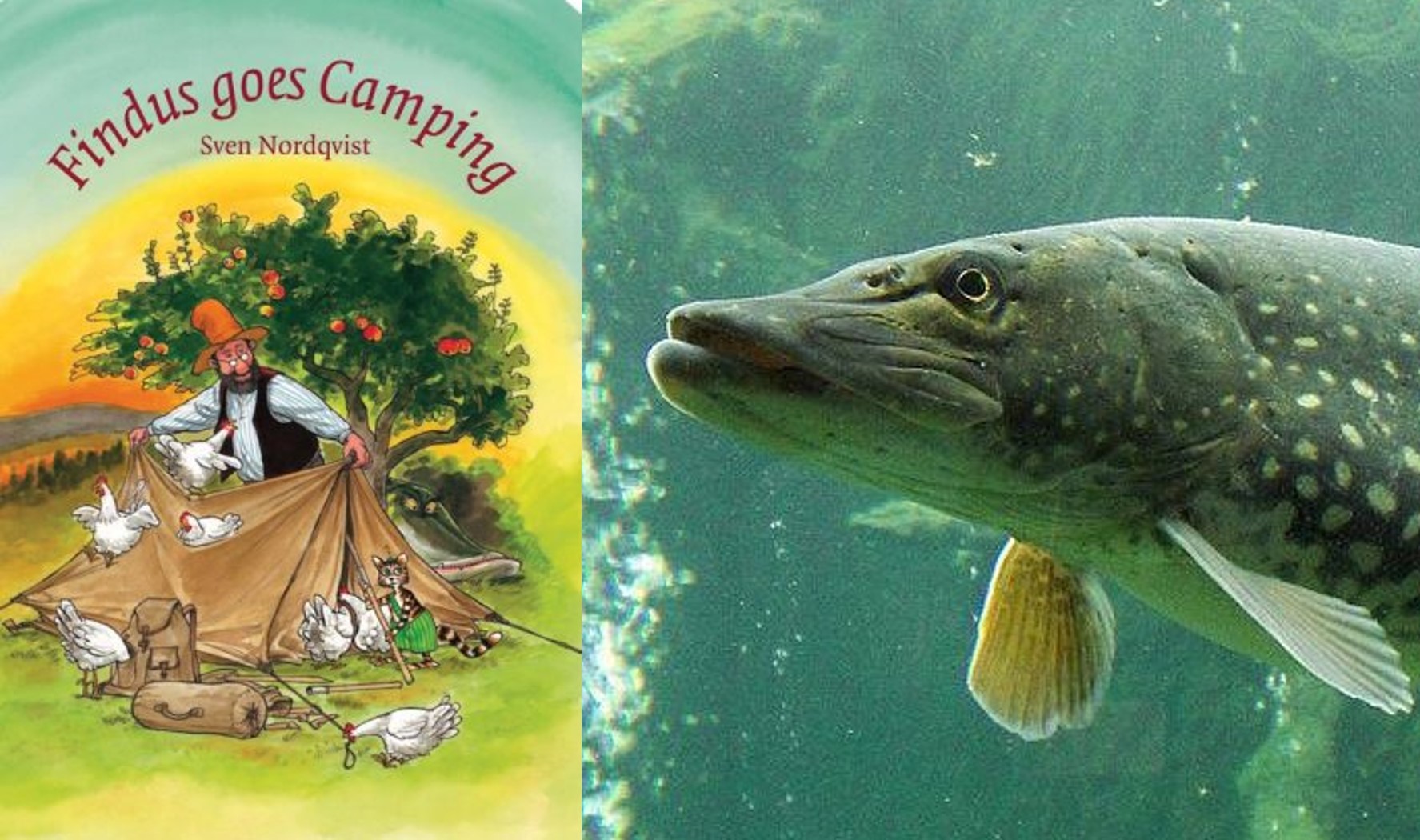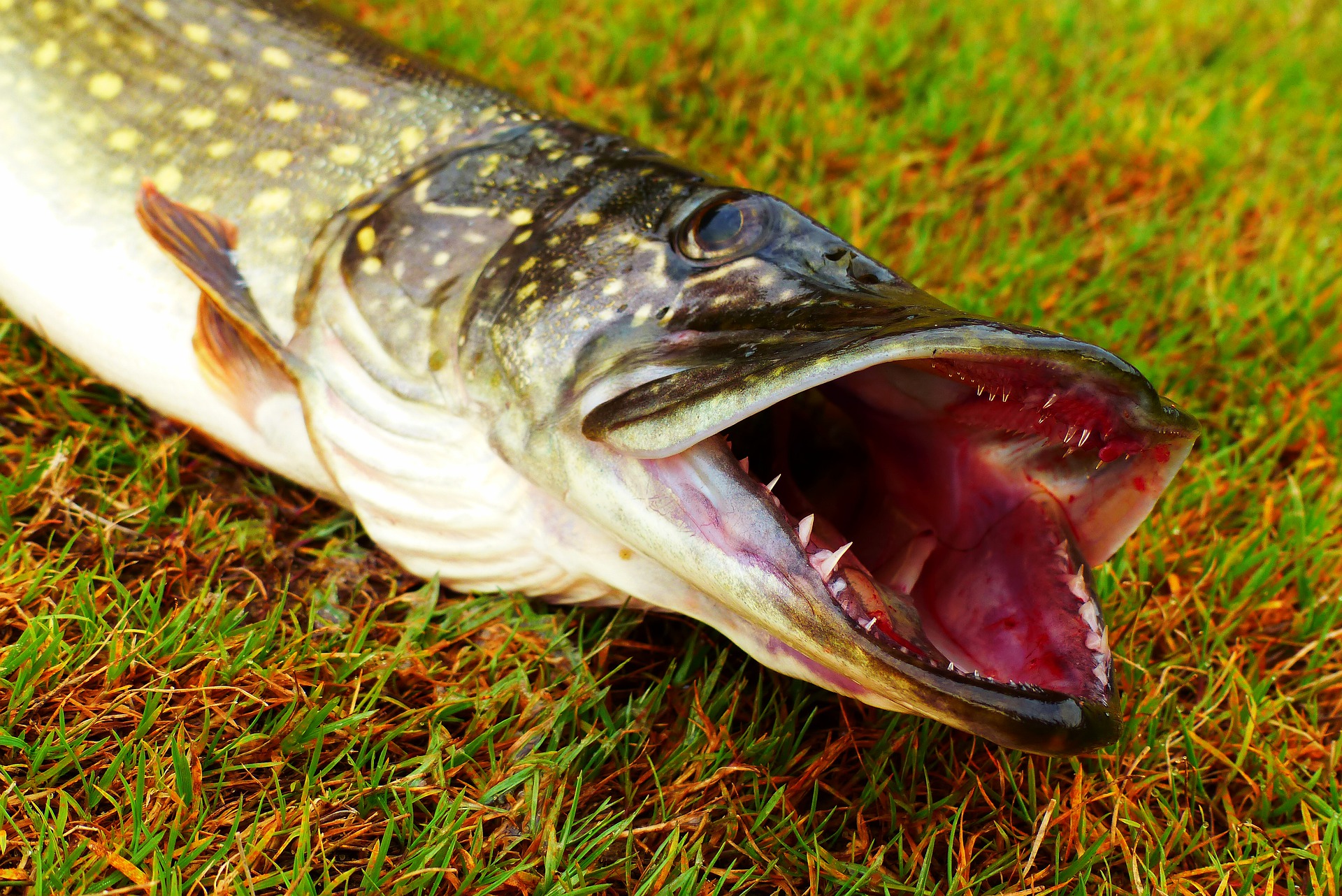Blog

#bioPGH Blog: Nostalgia and the Northern Pike
 A resource of Biophilia: Pittsburgh, #bioPGH is a weekly blog and social media series that aims to encourage both children and adults to reconnect with nature and enjoy what each of our distinctive seasons has to offer.
A resource of Biophilia: Pittsburgh, #bioPGH is a weekly blog and social media series that aims to encourage both children and adults to reconnect with nature and enjoy what each of our distinctive seasons has to offer.
Stories have a way of sticking with us, don’t they? The northern pike (Esox lucius) is one of the few species of animal that existed both in my childhood books of faraway places and right in my own local waterways. My mom is Swedish, and when I was little, she used to read a Swedish series of books to my sister and me — the Pettson and Findus books. Pettson was an old man who lived with his talking, overalls-clad cat named Findus. Findus was a lovably inquisitive cat who liked his birthday so much that he celebrated it three times a year, and he was always accidentally causing miniature disasters or generally getting into harmless mischief when his ideas or imagination got the better of him. But the one thing, the one thing, that could really scare Findus and put a stopper on his adventures and shenanigans…was even the mere the thought of a pike. Whether on land or water, ghostly visions of pike haunted his camping dreams and prematurely ended his fishing trips. As a young reader, I remember not particularly knowing what kind of fish that was, but I assumed it was a faraway Swedish species that was monstrous in size. I suppose in a way, I was partially correct on both fronts, but let’s take a look at what this fish species is really all about, without the talking cat for now.

Left, Findus goes Camping (Hawthorn Press), translated from Pettson tältar. Note the pike looming behind the tree. Right, Northern pike, US NPS
Northern pike are a circumpolar species of fish, meaning they are present all around one of the poles — in this case the Northern Hemisphere. We see the same species here in North America as well as across Eurasia ( I am sure geneticists will continue working on understanding that, though!). They prefer cool, still waters with heavy vegetation. Here in western Pennsylvania, northern pike are found primarily in the Allegheny and Ohio Rivers, along with a few of their connected smaller waterways, and they can be found in Presque Isle Bay of Lake Erie. The species primarily prefers freshwater, especially in North America, but there are also northern pike in brackish waters, such as the Baltic Sea.
Perhaps my storybook friend Findus was afraid of this widespread fish for a few very understandable reasons. First, northern pike are large fish that can grow to be over four feet long and weigh upwards of 60 pounds. They are also quite ambitious opportunistic predators who typically prey on other fish but have been known to also eat frogs, birds, squirrels and other small mammals who found themselves too close to water! To accomplish their predatory goals, they ambush their prey and they have a rather intimidating set of teeth, which includes rows of small needle-like teeth along the roof of their mouth. The species is known to be aggressive, and there is also at least some degree of cannibalism across northern pike populations, particularly as juveniles.

Pike teeth. Image, Pixabay.
Perhaps Findus also feared the pike because the fearsome fish has quite a few appearances in Eurasian mythology due to their reputation. In Russia, pike appear in multiple fairytales as either dark water spirits or benevolent wish-granting beings. Additionally, the scientific name for the northern pike is Esox lucius— with lucius as a reference to the Anglo-Saxon notion of a “water wolf,” and they saw pike as a legendary creature capable of eating entire humans!
Of course, northern pike aren’t quite that dramatic. And they aren’t quite as scary as my younger self thought they might have been since Findus seemed to dread them so much. I would imagine, though, that since the thought of a pike has always made me think of Findus, it’s likely the connection will always remain. Stories have a way of sticking with us, don’t they? What are some plants or animals that you remember from stories in your own childhood? Do you still see those plants and animals around today?
Resources
Minnesota DNR: Species Profile - Northern Pike
Images: Header, Pixabay; Cover USFWS.

